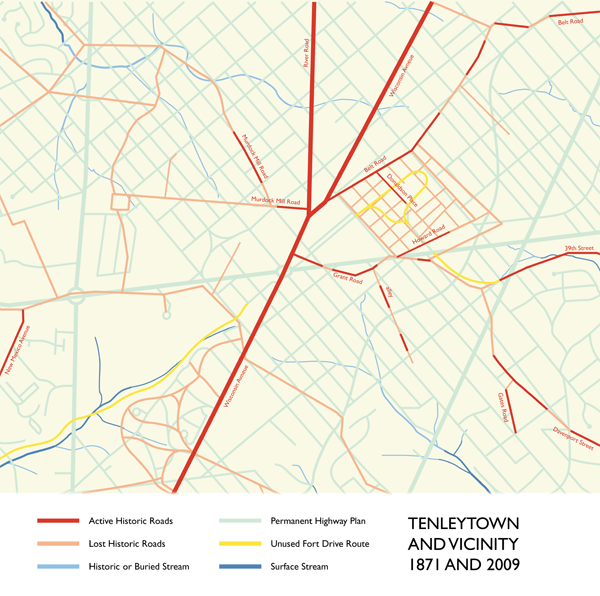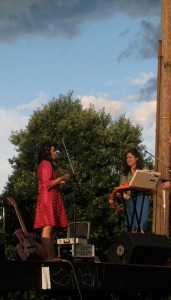
1: The first two Fort Reno concerts were a smashing success, with at least 300 people showing up to listen, eat, and frolic on the grass around the stage. Monday night’s show was a fun mix of different styles. The Sweater Set delivered on their ultra-indie promise to give a twee multi-instrument set. Funk Ark played some solid 70s funk that made the sudden arrival of a Park Police car seem a little too like a cop movie, especially when teens started fleeing the concert with black plastic bags. Lastly Pash led the night out with a harder energy, although the lead singer’s vocals were drowned out in the mix, which took away a lot of the melody.
The second night began with noon:30, who added some soul-like vocals to cool and muddy indie rock. They’re having an EP release party on July 4th. Meow vs. Meow followed up with a harder sound with a lot of strong rhythm. Lastly, the Electricutions played the crowd out, just after the sun had totally left the horizon. There’s another show this Monday and another on Thursday, but more on that later.
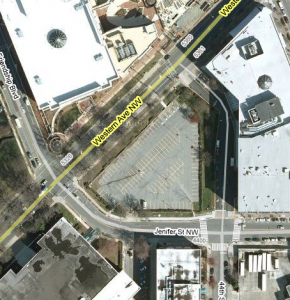
2: National Realty & Development, the owners of Lord and Taylor’s, have announced plans and received approval to build a one-story commercial building on the “home plate” parking lot behind Mazza Gallerie. The Northwest Current’s reporting mentions that the original lease between L&T’s and Mazza called for the parking lot to be used as a car park in perpetuity. Now, the unanimous and quick vote of the council is to turn it into a walkable shopping district, competing with the deluxe stores along Wisconsin Avenue. Could still have some height on top of that, but apparently the 50-year lease ends in 15 years, so development won’t have enough of a payoff for them. Completion of the five stores is expected for early 2011.
3: Politics and Prose, the cultural institution at the border of Tobago and Chevy Chase, announced its schedule for July/August. You can look at the schedule, but here are the authors presenting books on urban issues:
- Wednesday, July 8th, 7PM: Alyssa Katz will discuss her book on the foreclosure and mortgage crisis, Our Lot.
- Friday July 10th, 7PM: Reloville, by Peter Kilborn, examines large subsets of suburban residents whose livelihoods depend on not forming close ties to the local community and frequently moving on to a new job.
- August 11th, 7PM: Jane Jacob’s struggle with Robert Moses, and the issues it was born of, are retold in Anthony Flint’s Wrestling with Moses.
Maybe I’ll see you there. It’s not too accessible, but you can take the L1,2,4 or the M4 from Van Ness and Tenleytown Metro stations, respectively.
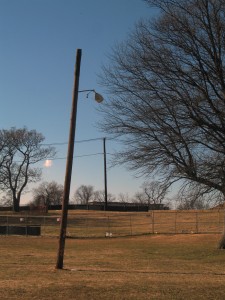
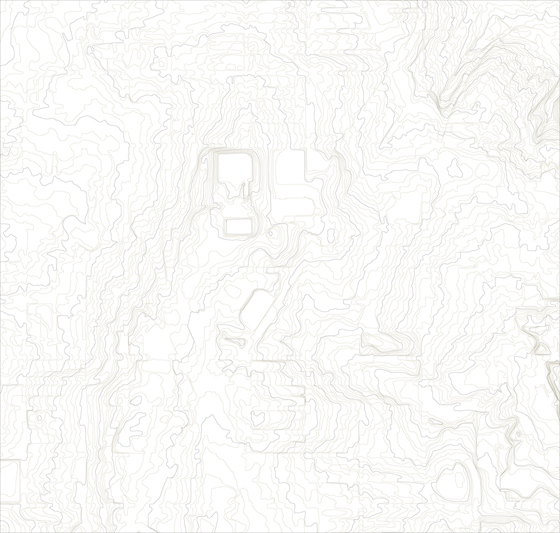
 I noticed yesterday that DC has re-signed Murdock Mill Road, down off River Road in Tenleytown. It’s a nice little reminder of history – and of natural geography – among the rationalist streets of the city plan laid down in 1897. While those straight, predictable lines make navigating the city easy, they did erase the context and history of what was Washington County. By its perseverance, this little snippet of prior use reminds residents of the pre-urban past, adding quiet character to the neighborhood.
I noticed yesterday that DC has re-signed Murdock Mill Road, down off River Road in Tenleytown. It’s a nice little reminder of history – and of natural geography – among the rationalist streets of the city plan laid down in 1897. While those straight, predictable lines make navigating the city easy, they did erase the context and history of what was Washington County. By its perseverance, this little snippet of prior use reminds residents of the pre-urban past, adding quiet character to the neighborhood.